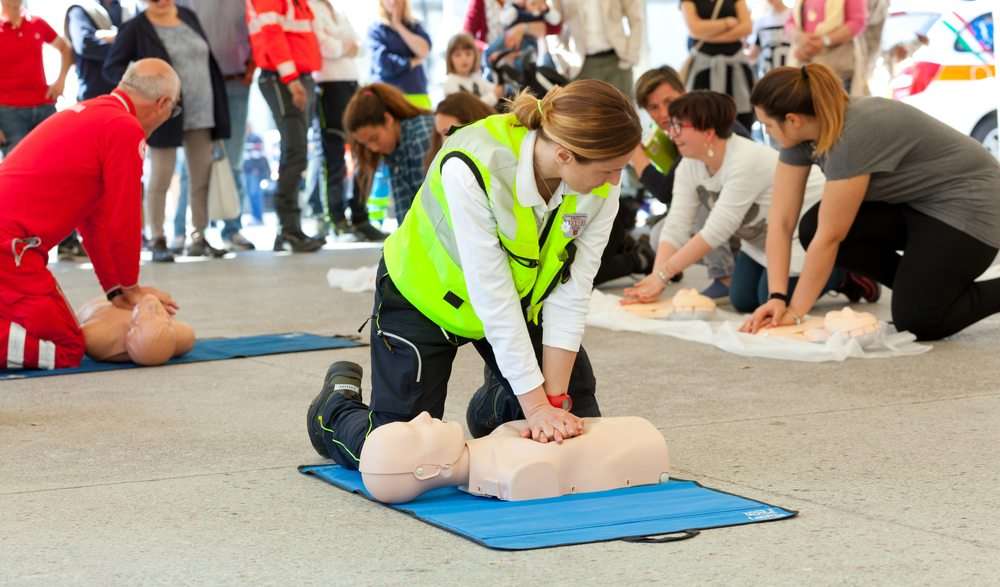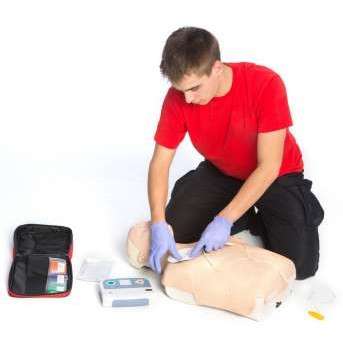Principles of Emergency Care
First Aid is the initial emergency care given immediately upon arrival at the scene to an ill or injured person. The First Aider and people who are assisting should continue with assistance until the professional medical assistance takes over the care of the casualty. Medical professionals may include paramedics, doctors, or ambulance officers.

First Aiders should always make notes or fill out a casualty report for any event attended, no matter how minor. Proper records will help you to recall the incident if you are ever asked about it at a later stage. The responsibility is greater if you have a role as a First Aider in your workplace and you may have reporting obligations under the Occupational Health and Safety Act 85 of 1993 (OH&S) legislation. You can check this with your workplace’s Health and Safety Representative.
Records may be used in a court, so ensure your reports or notes are legible, accurate, factual, contain all relevant information and are based on observations rather than opinions.
Treatment
The last step is to actually provide care to the limits of the first aider's training, but never beyond. In some jurisdictions, you open yourself to liability if you attempt treatment beyond your level of training. Treatment should always be guided by the 3Ps:
- Preserve life
- Prevent further injury
- Promote recovery
Treatment will obviously depend on the specific situation, but some situations will always require treatment (such as shock). The level of injury determines the level of treatment required. The principles first, do no harm and life over limb is essential parts of the practice of first aid. Do nothing that causes unnecessary pain or further injury unless to do otherwise would result in death.
Aims
Although the 3Ps are outlined above, we will also include two more areas that needs attention when conducting primary emergency care:
- Protection against further injury.
- Preservation of life.
- Promotion of recovery.
- Prevention of injuries for people at any age.
- Promotion of healthy lifestyles.

Protection against further injury
No injured person should be moved if his or her life is not in danger. If a person is not breathing and has no pulse, his or her life is in danger. Life threatening situations exist where there is significant risk of loss of life.
Knowing what to do in an emergency is as important as knowing what not to do. Moving a person with a neck injury, for example, can lead to permanent spinal cord injury and paralysis.
In spite of the variety of injuries possible, several principles of first aid apply to all emergencies. The very first step is to call for professional medical help, if that is possible. Establish what dangers may still be present at the scene of the accident or injury before beginning to provide first aid.
Preservation of Life
In order to stay alive, all persons need to have an open airway—a clear passage where air can move in through the mouth or nose through the pharynx (part of the throat) and down in to the lungs, without obstruction.
Conscious people will maintain their own airway automatically, but those who are unconscious may be unable to maintain a patent airway, as the part of the brain which automatically controls breathing in normal situations may not be functioning.
If the patient was breathing, a first aider would normally then place them in the recovery position, with the patient leant over on their side, which also has the effect of clearing the tongue from the pharynx.
It also avoids a common cause of death in unconscious patients, which is choking on regurgitated stomach contents. The airway can also become blocked through a foreign object becoming lodged in the pharynx or larynx, commonly called choking.

The First Aider will be taught to deal with this through a combination of ‘back slaps’ and ‘abdominal thrusts’.
First Aid Training is available in My Safety Shop for the following:
First Aid Level 1
First Aid Level 2
First Aid Level 3
MAKROSAFE / SAFETYWALLET / MY SAFETY SHOP are in partnership, CONTACT US now for all your First Aid needs.
Once the airway has been opened, the First Aider would assess to see if the patient is breathing. If there is no breathing, or the patient is not breathing normally, such as agonal breathing (abnormal pattern of breathing), the First Aider would undertake what is probably the most recognised first aid procedure, called cardiopulmonary resuscitation or CPR, which involves breathing for the patient, and manually massaging the heart to promote blood flow around the body.
Promoting Recovery
The First Aider is also likely to be trained in dealing with injuries such as cuts, grazes or bone fracture. They may be able to deal with the situation in its entirety (a small adhesive bandage on a paper cut), or may be required to maintain the condition of something like a broken bone, until the next stage of definitive care (usually an ambulance) arrives.
Prevention of Injuries for people at any Age
The First Aider must prevent injuries for all age groups. Age groups are categorised as follow:
Infant: For purposes of first aid, an infant is defined as being younger than 1 year of age.
Child: A child is categorised as being above 1 year of age
Adult: For purposes of first aid, adults are defined as people about age 12 (adolescents) or older.
You need parental permission to give care to a child or an infant, even if it is an emergency. The only reasons for which you could give care without permission are if the parent is not present or is injured and unable to respond.
Promoting of Healthy Lifestyles
The upside to living healthy is that there are many different ways to go about doing it. So many ways that there is no reason why you can't find a plan which suits you well. But no matter which way you decide works best for you, here are some general guidelines you are probably going to want to adhere to:
- Be a role model.
- Encourage healthy eating
- Encourage physical activity.






Comments (1)
I need more about the principles and curriculum
2022-08-08 15:41:49